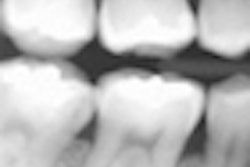A chairside picture archiving and communications system (PACS) can eliminate the need for hand tracing when conducting orthodontic cephalometric analysis, according to a study in the European Journal of Orthodontics (October 2011, Vol. 33:5, pp. 537-543).
Researchers from the University College of London Eastman Dental Institute wanted to assess the possibility of using a PACS for basic chairside cephalometric analysis and compare PACS with hand tracing and on-screen digitization using a commercial program (Dolphin Imaging Plus, version 10.0).
The study authors selected 100 digital lateral cephalometric radiographs and analyzed them using the Eastman analysis. Angular and linear measurements were recorded, and a single operator traced each radiograph twice, using PACS, hand tracing, and the Dolphin Imaging system.
They found the PACS to be more repeatable than Dolphin for measuring the angle between the upper incisors and the maxillary plane. But it was less repeatable than hand tracing for measuring percentage lower anterior face height.
In addition, while there were statistically significant systematic differences between PACS, hand tracing, and Dolphin when measuring lower incisor inclination, all three methods agreed on average, and differences between the methods were all within clinically acceptable limits, the study authors noted.
"PACS was found to be clinically acceptable to be used chairside, without the need for hand tracing or involvement of any orthodontic software," they concluded. "This offers the freedom to analyze digital cephalograms within a clinical area at the same appointment as when the digital radiograph is taken."



















